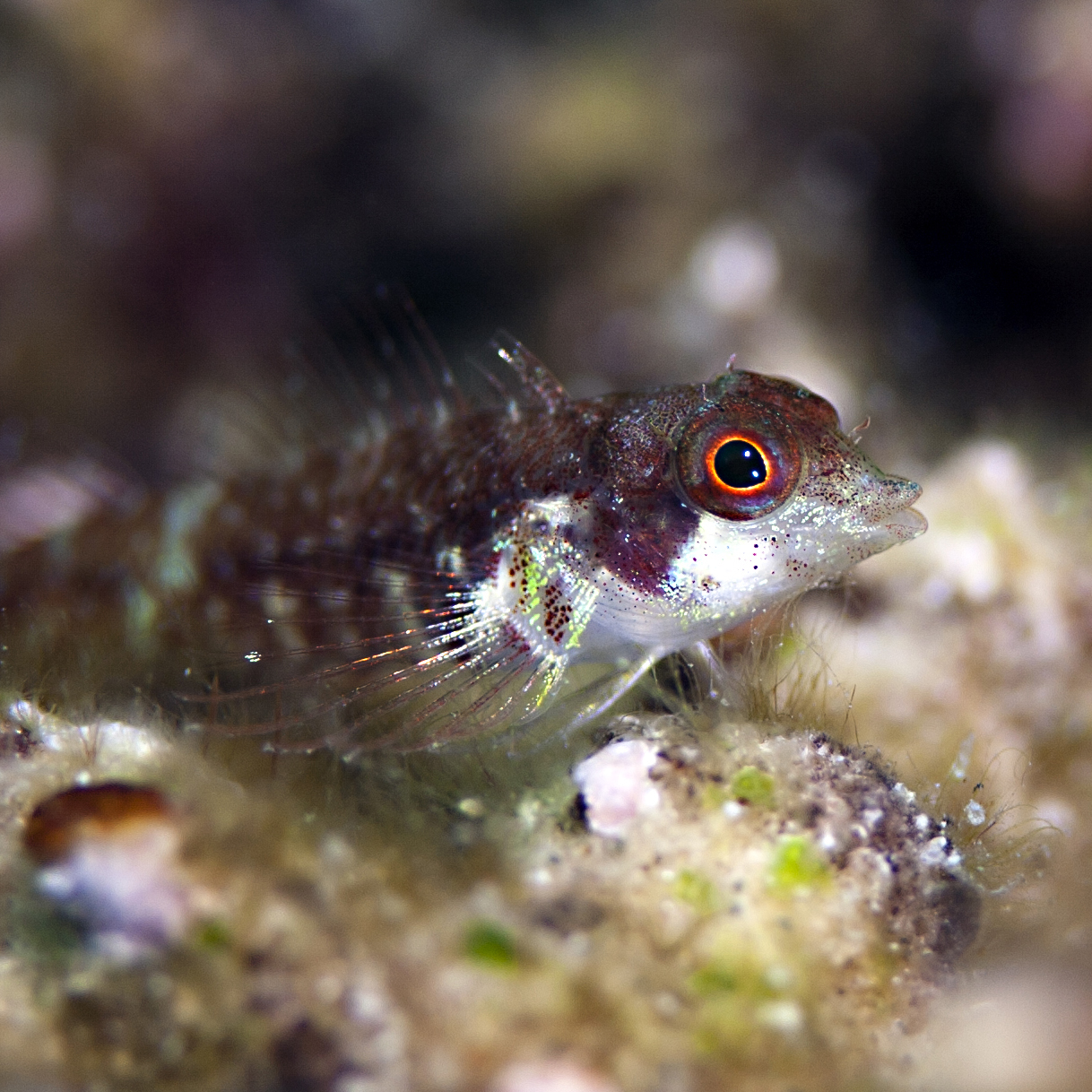They are cryptic, live fast and die young, but the tiniest of bottom-dwelling fishes may hold the key to the future survival of the world’s vast coral reefs, according to a University of New England (UNE) researcher.
Postdoctoral research fellow Dr Chris Goatley believes the small fishes he is studying – some no longer than 20 millimetres, known as cryptobenthic fishes – could serve as critical indicators of reef health. They are abundant, few species live longer than a year, and their highly specific habitat needs make them very sensitive to change.
“Their rapid lifecycles and small home ranges mean the cryptobenthic fishes can help us to understand changes on the reef, and evolutionary patterns,” Chris said. “We are starting to use them as models to test much larger biological and ecological theories.
“While most research is focused on bigger reef fishes, which can live for decades, these little fishes, that may live for just eight weeks, could act as a canary in the coalmine. They are highly sensitive and are likely already reacting to shifts happening on our reefs. We might be able to use them as tools to predict future change.”
While 17 families of cryptobenthic fishes are amazingly abundant on coral reefs, and are thought to represent half of all fish individuals and 40% of all reef species, they have been sampled in just a few locations around the world and many remain undescribed. Chris and his partners from the Simon Fraser University in Canada, University of Washington and James Cook University, predict that at least 30 new cryptobenthic species will be described each year for the foreseeable future.
“They have exploited a range of niches that are inaccessible to larger fishes and this has led to the rapid evolution of numerous new species,” Chris said.
Beyond their role as bio-indicators, cryptobenthic fishes are also important components of the reef food chain and have developed amazing reproductive strategies to ensure the success of the next generation.
“After three weeks floating around in the plankton, some species have just five weeks on the reef to reproduce, change sex and reproduce again,” Chris said. “Because they are so small and don’t produce many eggs – maybe a few hundred in their lifetime – cryptobenthic fishes have to look after them really well until they hatch, which is very unusual for fish. Parental care can involve holding the eggs in their mouths, sticking them under their fins, and protecting them in belly pouches.”
These little fishes probably eat whatever is available, including waste food, rotting plant material and the faeces of larger animals. It would appear that they, in turn, are the staple food of countless bigger predators.
“By eating the detritus and getting eaten themselves, these millions of tiny fish are probably incredibly important in linking energy back into the coral reef ecosystem,” Chris said. “They are the staples of the reef, the potatoes, the rice of the reef, and without them many larger animals may struggle to find food. They are a foundation of reef food chains, the reef equivalent of krill.”
Chris is using micro-CT scanning technology at UNE to assess the skeletal and muscular structure of cryptobenthic fish he has sampled from Orpheus and Lizard islands on the Great Barrier Reef to try to better understand their role in coral reef ecosystems.
“There is so much we have to learn about these little fishes,” he said. “They are so under-studied, so fascinating and, apart from being incredibly important to reef biodiversity, are often quite beautiful.”
Chris and his team’s findings were published this month in the journal Biological Reviews.
Image: Cf atrogulare


